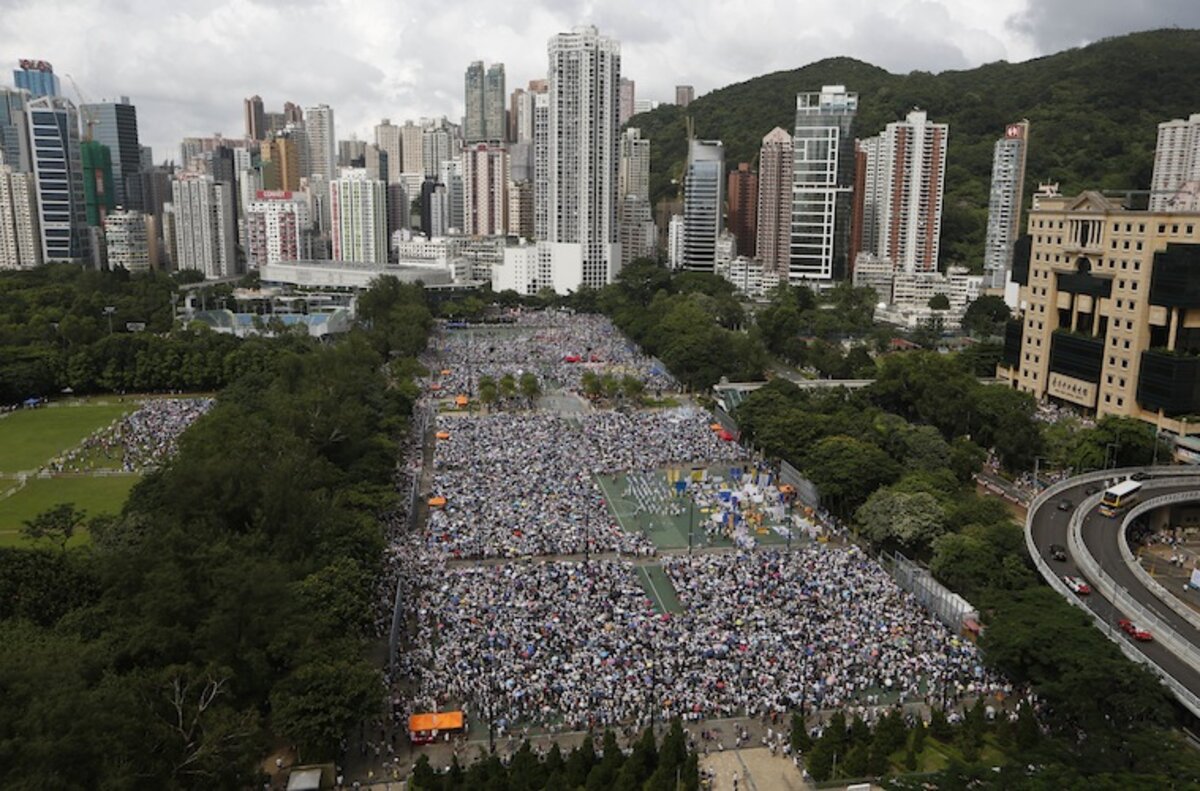Passing the torch of peaceful protests
Loading...
On July 2, Americans celebrated the 50th anniversary of the signing of the Civil Rights Act. The 1964 law was a milestone for democratic freedom in the United States. Equally worthy for celebration, however, were the years of nonviolent protests across the South that led up to the landmark law. Those peaceful tactics still serve as a model today for democracy activists around the world.
In Hong Kong, for example, hundreds of thousands of demonstrators marched peacefully July 1 to demand China allow a wide range of candidates in the election of the territory’s chief executive in 2017. In the days before the protest, pro-democracy activists held an unofficial referendum on the nomination process. Nearly a quarter of Hong Kong voters participated.
In Venezuela, too, ongoing protests against President Nicolás Maduro’s government have largely been peaceful. A key protest leader, Leopoldo Lopez, who was inspired by the tactics of Nelson Mandela, Mohandas Gandhi, and Martin Luther King Jr., remains in jail. And in a report last month, Human Rights Watch tallied up dozens of attacks on protesters by security forces.
In the Middle East, the pro-democracy protests that began peacefully in 2011 have mostly failed, with Tunisia being the one exception among the countries that had Arab Spring uprisings. Syria’s nonviolent protesters were overtaken by violent jihadists, leading to a self-proclaimed “Islamic state” straddling Iraq and Syria. In Egypt, protesters who at first achieved democracy lost power to the authoritarian Muslim Brotherhood and later the Army.
In Libya, a leading advocate of peaceful protest, Salwa Bughaighis, was killed June 25 in Benghazi as the North African country tries to salvage a chaotic and barely democratic situation. As a human rights lawyer, Ms. Bughaighis stood up to both the dictator Muammar Qaddafi and Islamist groups.
Keeping violence at bay while struggling for democracy is a hard cause to maintain. Often, authoritarian regimes seek to break the attraction of peaceful demonstrations. In Ukraine, for example, protests last fall were attacked by a Russia-backed regime that only exposed its own brutality and led to its downfall. Now with democracy restored, the newly elected President Petro Poroshenko has tried to bring about a truce with violent pro-Russia separatists in the east. But as the rebels continued their violence, he has had to send in the Army while also asking civilians to use “civil disobedience to the so-called people’s republics.”
The history of nonviolent “freedom fighters” offers up many lessons for today’s activists. One lesson comes from Aung San Suu Kyi, leader of the democracy movement in Myanmar (Burma). She says that “fear is the first adversary we have to get past when we set out to battle for freedom, and often it is the one that remains until the very end.” During years of detention, she learned how to remain steadfast in the cause for freedom “because my mind had always been free.”
Similar ideas led to the Civil Rights Act, the liberation of white-ruled South Africa, and democratic revolutions from Latin America to the former Soviet states. When peaceful acts of protests do succeed, they help reveal the emptiness of any governance run by fear, exclusion, or injustice.




